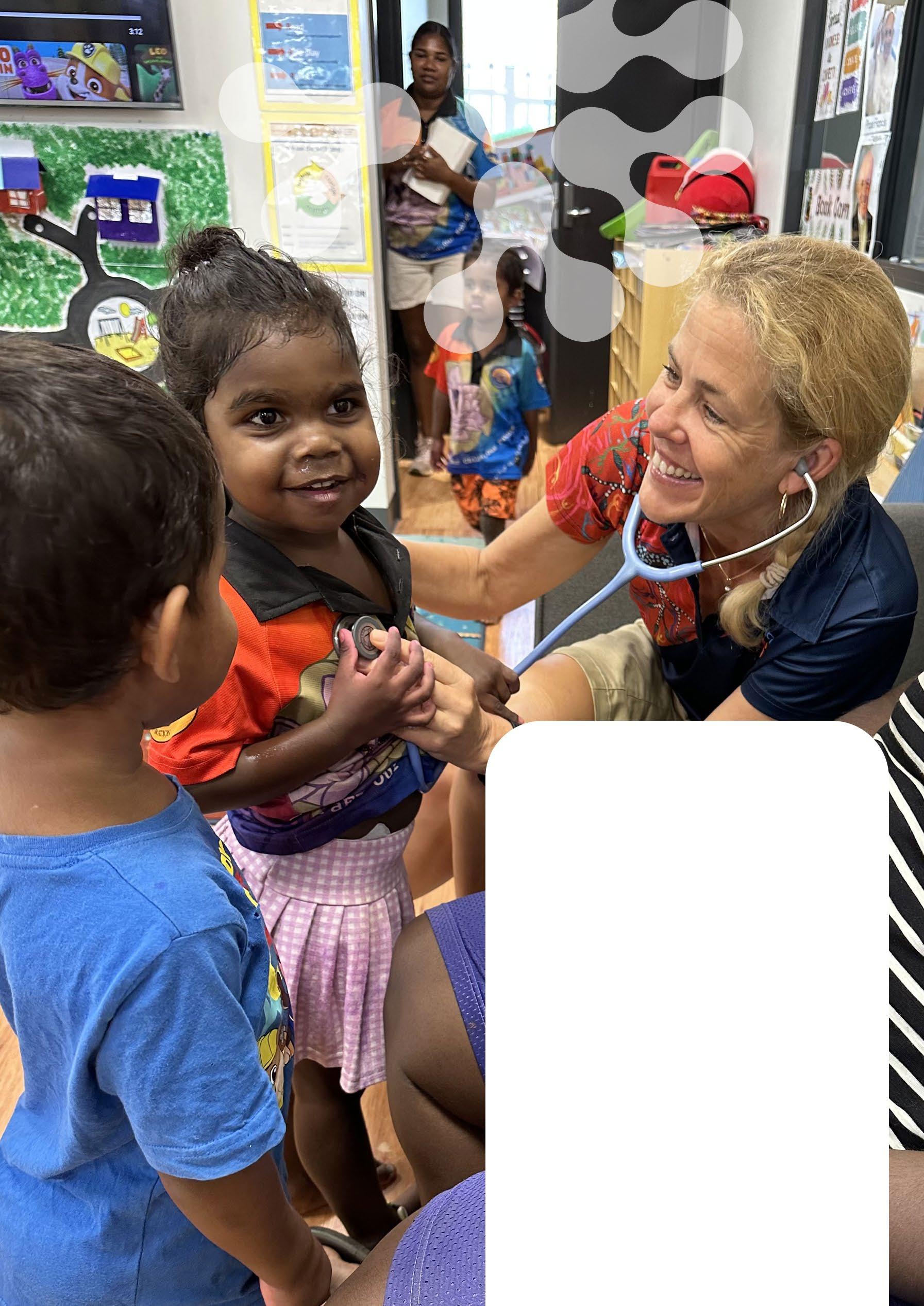
July 2023 - June 2024
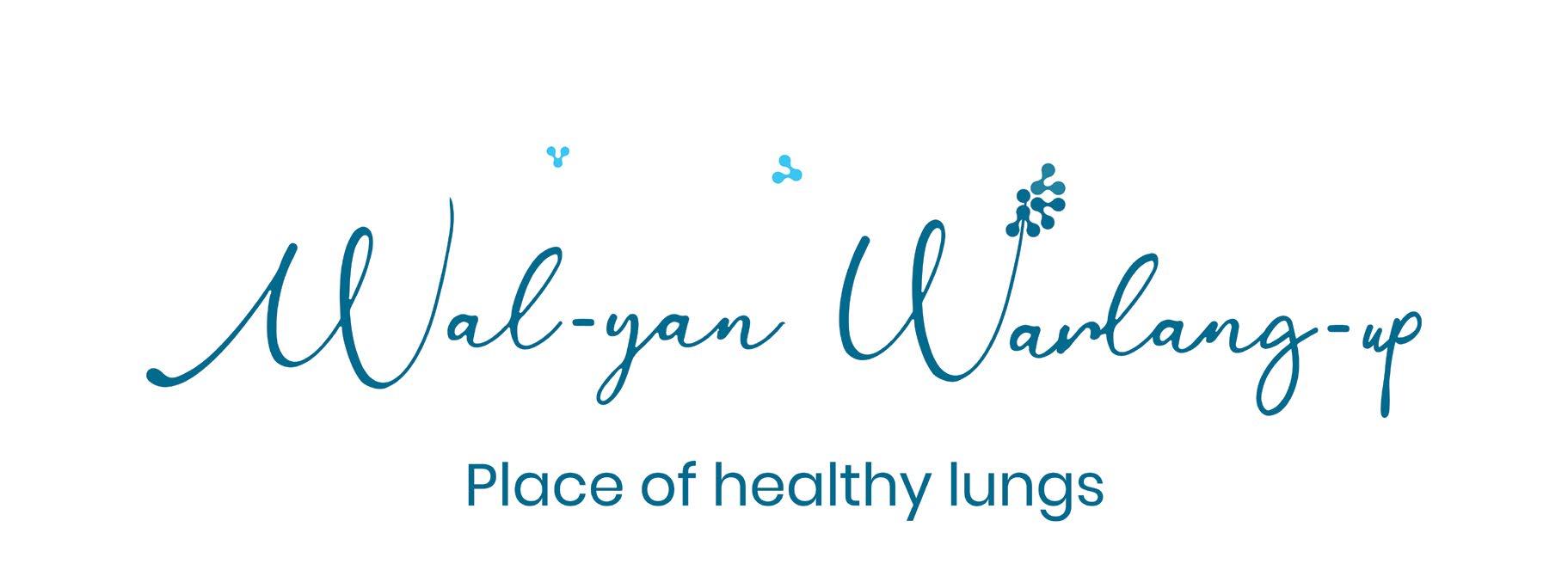
The English translation of our Noongar name is “Place of Healthy Lungs”.
“Wal-yan” means lungs, and “Warlang-up” means healthy place.
We would like to acknowledge Walter Jnr McGuire and Elder May McGuire for the Noongar name of place with English translation.
Acknowledgement
We would like to acknowledge and pay our respect to Australia’s Aboriginal and Torres Strait Islander peoples as the traditional custodians of the lands, the waterways, and the skies across Australia.
We would like to thank the Aboriginal and Torres Strait Islander people for caring and for sharing the land on which we are able to learn and undertake our respiratory research.
We would like to acknowledge the Noongar Nations and especially the Noongar Whadjuk People on whose land the Wal-yan Warlang-up Respiratory Research Centre at the Telethon Kids Institute is situated.
We would like to acknowledge and thank the traditional custodians of all the lands we have worked in across the Kimberley and Pilbara regions over the past year, including but not limited to Bardi, Jaru, Jawi, Juwalinny, Karajarri, Kariyarra, Kukatja, Mangala, Ngarla, Nyamal, Nyungamarta, Yawuru and Yulpartja people.
We pay our respects to elders past and present. We share our friendship and our kindness. We work together to ensure that every child has healthy lungs, for life.
About the Wal-yan Respiratory Research Centre
The Wal-yan Respiratory Research Centre - a powerhouse partnership between Telethon Kids Institute, Perth Children’s Hospital Foundation and Perth Children’s Hospital - brings together clinicians, scientists and community members from across the globe with a united goal to prevent childhood respiratory illness and ensure that all children have healthy lungs for life.
Our Vision
To ensure that every child has healthy lungs for life.
Our Mission
To prevent and cure respiratory illness in children through world-class, multidisciplinary research, that will drive pioneering discoveries out of the labs and into the community, across WA, Australia and beyond.
Our work extends across six strategic research areas:

Beating Chronic Lung Disease
Early Life Influences
Respiratory Infections and Immune Systems

Lungs and the Environment
Indigenous Health

Implementation into Clinics
Message from the Head
I am privileged to write to you as the newly appointed Head of the Wal-yan Respiratory Research Centre, a role I assumed in February 2024 following Professor Stephen Stick’s resignation from the position.
Since the establishment of the Wal-yan Centre in 2019, Professor Stick has built a solid foundation that has enabled our growth. Under his leadership, the Centre has flourished into a hub that unites respiratory researchers, clinicians, and innovation in our pursuit to ensure that all children have healthy lungs for life. We extend our gratitude to Professor Stick for his invaluable contributions, and I am excited to lead the Centre into a bright and promising future.
In Australia, the alarming reality is that around one million children are living with serious respiratory diseases, with over 110,000 of these children residing in Western Australia. Our commitment to making a significant impact on these children’s health through groundbreaking research remains unwavering.
Our dedicated team of 140 members, working on over 100 research projects, has been instrumental in driving our mission forward. While it is impossible to mention every achievement in this report, I would like to highlight some notable milestones from the past year.
Our researchers continued to unlock more pieces of the puzzle when it comes to the development of asthma. We identified a subset of children with acute wheeze and asthma that have immune responses that predict future exacerbations. We also found that the
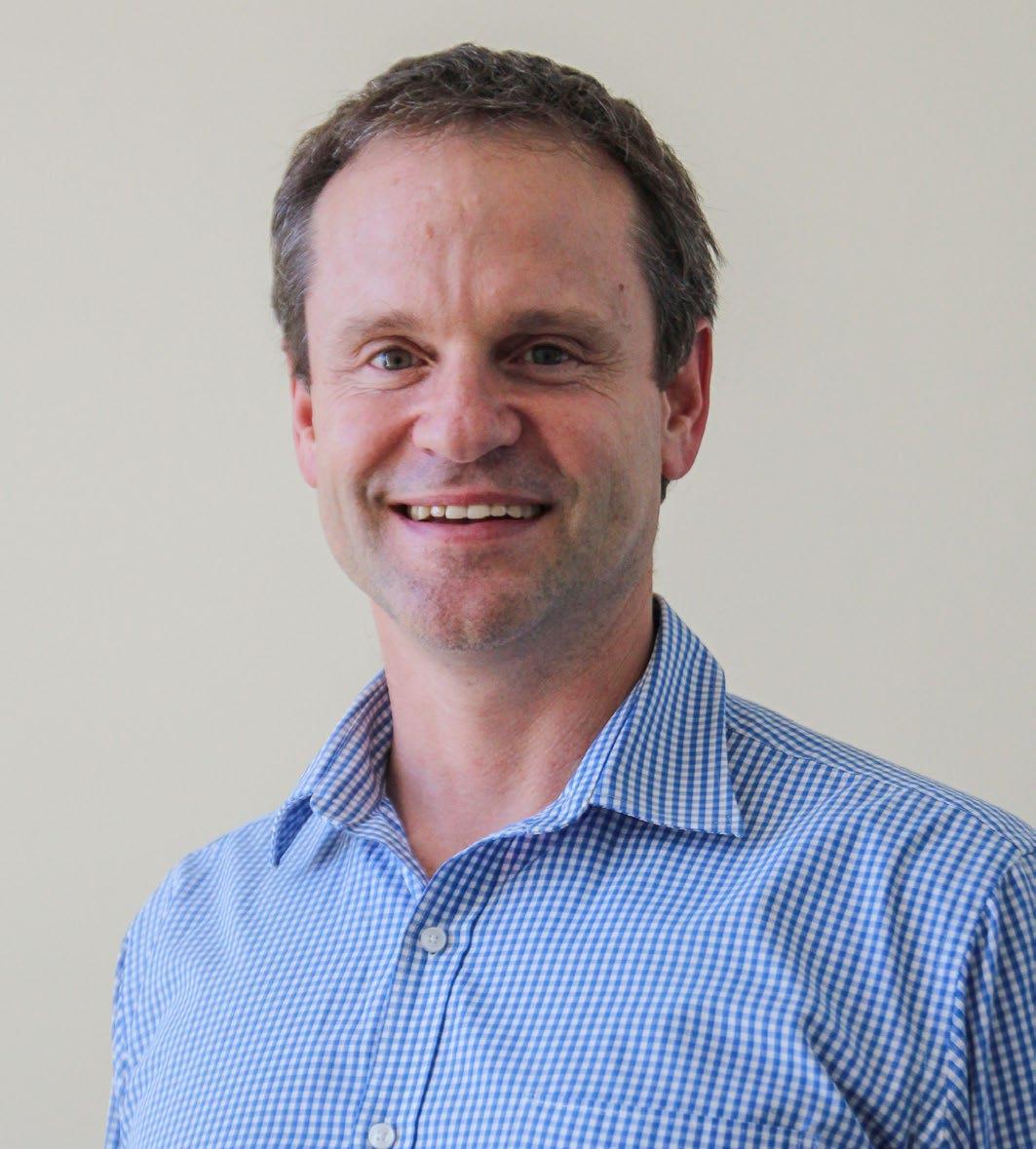
airways of children with acute wheeze and asthma respond differently to Rhinovirus A and C compared to healthy children. Our next step is to investigate targeting these differences with treatments.
In a significant development, we established Western Australia’s inaugural bacteriophage manufacturing facility - aimed at enhancing access to life-saving phage therapy for patients battling antibiotic-resistant bacterial infections, which are a growing global health crisis.
We continued our work to help nip lung disease in the bud before it becomes permanent, by facilitating timely detection, diagnosis, and management of chronic wet cough in Aboriginal children through co-developing solutions with families and health practitioners.
Our partnerships with Aboriginal medical services, Aboriginal families, and clinicians in communities in the Kimberley region of WA, Derbarl Yerrigan, Wiluna, Northern Territory and Queensland have led to culturally meaningful and sustainable chronic wet cough information campaigns and improvements to the health system.
So far, there are no specific treatments to improve the lung health of children surviving preterm birth after discharge from the neonatal intensive care unit. We led a clinical trial which found that a common asthma drug is effective for some very premature babies who go on to suffer from lung complications.
Our research into e-cigarette products and their health impacts has informed education campaigns, anti-vaping advocacy, and policy.
This work contributed to the Australian Federal Government’s landmark reforms on 1 January 2024 aimed at curbing the rising epidemic among school students and young people.
We completed the first global analysis of climate change’s impact on child health, showing the greatest impacts were on pre-term birth and respiratory illness.
Following on from earlier research, a trial is underway to see if we can help children with cerebral palsy to better respiratory health, and we led a study which enabled us to better understand, predict and ultimately prevent the breathing problems children with neuromuscular conditions experience while sleeping.
We are proud of these achievements, in what was the last year of our initial five-year powerhouse partnership agreement with Telethon Kids Institute, Perth Children’s Hospital Foundation and Perth Children’s Hospital.
Looking ahead, we are setting our strategy and research objectives for the next 10 years, and working to secure vital funding for our research activities.
We recognise the challenges faced by the research community, including securing funding and providing viable career pathways for emerging scientists. We will persist in advocating for the essential resources to support our Centre, our research and to cultivate future leaders in the field.
Our achievements are only possible thanks to the support we receive from our community. I extend my sincere gratitude to our study participants and their families, community reference group members, research buddies, collaborators and partners, as well as our corporate and philanthropic supporters. Your dedication and collaboration are essential to improving, extending, and saving the lives of children affected by respiratory diseases.
I would also like to convey my heartfelt thanks to every staff member at the Wal-yan Centre. Your dedication and relentless efforts have brought us closer to realising our vision of a healthier future for children with respiratory illnesses.
Together, we will keep pushing the boundaries of innovation, finding solutions, and making a transformative impact on the lives of children with respiratory diseases.
Professor André Schultz Head, Wal-yan Respiratory Research Centre
Highlights
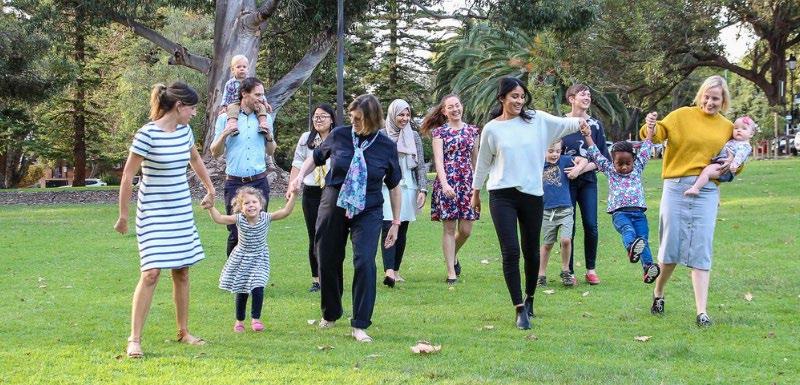
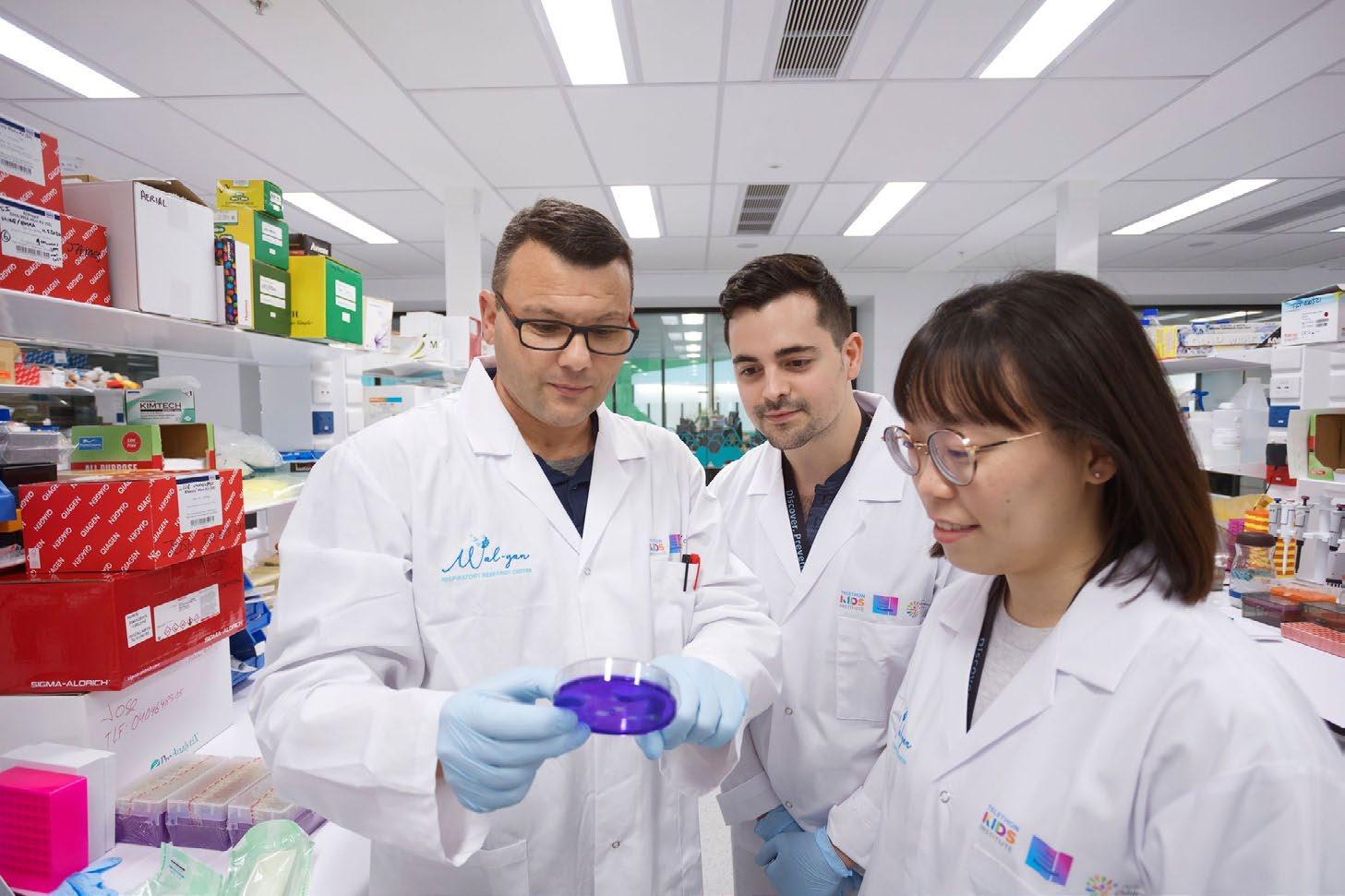
Western Australia’s first bacteriophage manufacturing facility established: A vital tool against antibiotic resistant superbugs
In a significant development aimed at enhancing access to life-saving phage therapy for patients battling antibioticresistant bacterial infections, Western Australia’s inaugural bacteriophage manufacturing facility was established.
Bacteriophages, or ‘phages’, are specialised viruses naturally present in the environment,
including waterways and soil. These viruses selectively target and eliminate antibioticresistant bacteria, offering a potential alternative to traditional treatment therapies.
The World Health Organization has recognised antimicrobial resistance as a top global health concern, projecting over 10 million annual deaths within the next 25 years.
Given the escalating global concern about antibiotic resistance, phage therapy research is gaining momentum as a promising complement or substitute for traditional antibiotics.
The Phage WA manufacturing facility represents a crucial step toward making phage therapy a clinical reality for Western Australians facing antibiotic-resistant bacterial infections.
Associate Professor Anthony Kicic said that the manufacturing facility’s establishment is the next key step in bringing patients closer to faster and more effective phage treatments.
Enhancing the lung health for preterm birth survivors by uncovering treatable traits
A project to uncover treatable traits to improve the lung health of people born preterm was made possible thanks to a $1.99 million Medical Research Future Fund (MRFF) grant.
People born very prematurely often face ongoing breathing problems, lung damage, issues with blood vessels in the lungs, and lasting obstructive airway disease throughout their lives.
For some people born preterm, lung disease worsens gradually over time, causing their lung function to deviate from the expected normal trajectory.
Those born preterm are more likely to be diagnosed with other respiratory diseases, such as chronic obstructive pulmonary disease (COPD). Similarly, rates of asthma are up to five times higher in those born preterm than the general population.
Thanks to significant advances in neonatal critical care throughout the 1990s the oldest survivors of very preterm birth are now just entering their 30’s. However there is a lack
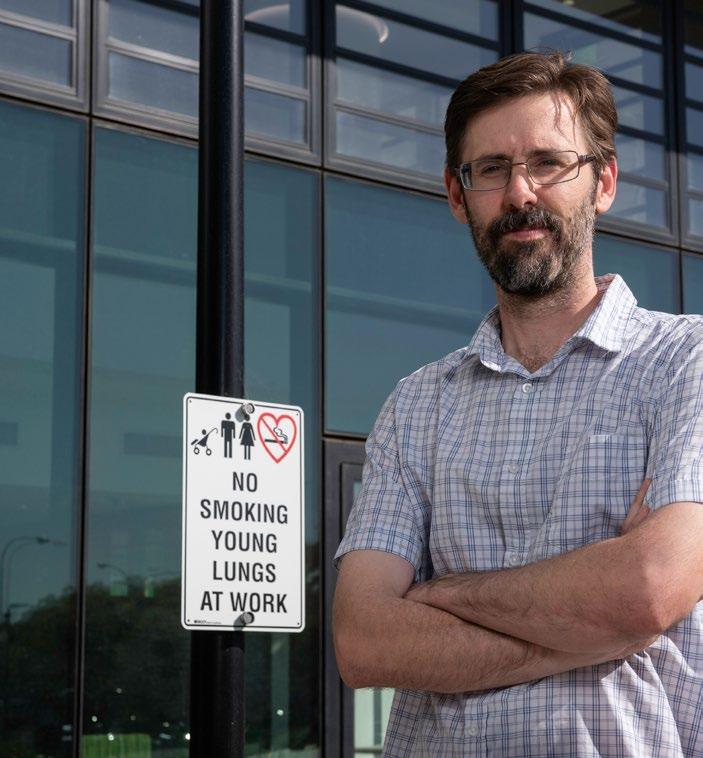
of clarity around how preterm birth affects the lungs, who might have more problems, or what treatments work best.
What we do know is that lung issues in preterm-born individuals vary a lot, so a single treatment won’t work for everyone, and it is important to identify features that can be targeted for particular treatments.
Titled FINGERPRINT: FINdinG
Early markers of Respiratory disease for survivors of PReterm birth which IdeNtify Treatable traits, this five-year project led by Associate Professor Shannon Simpson will develop traits of preterm lung disease using past and current information from groups of preterm birth survivors about whom we already know a lot.
Read the full story here
Informing policy about the health impacts of e-cigarettes
On 1 January 2024, the Australian Federal Government introduced a series of landmark reforms aimed at mitigating the health impacts of e-cigarettes, with a particular focus on curbing the rising epidemic among school students and young people.
Playing a crucial role in helping to shape these transformative measures, the Telethon Kids Institute has a dedicated research program focussed on investigating the health effects of e-cigarettes, and is part of a coalition of organisations that have been advocating for a comprehensive reform package, to ensure that vaping products are accessible only through prescription in Australia.
Associate Professor Alexander Larcombe has spearheaded perhaps Australia’s leading program of research into the contents of e-cigarette products and the associated health impacts, the findings of which have helped to inform education campaigns, antivaping advocacy and policy.
Recognising that research alone is insufficient, Associate Professor Larcombe has continued to actively share his findings and has worked diligently to influence public perception and policy.
Establishing himself as a credible, reliable, and respectful source of information, he has engaged with policy makers and regularly participated in media interviews and public events, to educate the public about the dangers of vaping.
The combined impact of Associate Professor Larcombe’s research and advocacy work has helped to shape public perception of e-cigarettes and reinforce the critical message that these products are far from harmless.
This concerted effort has played a pivotal role in informing and supporting the implementation of robust policies to safeguard the health of the Australian youth.
Read The Conversation article authored by Associate Professor Larcombe - What’s in vapes? Toxins, heavy metals, maybe radioactive polonium
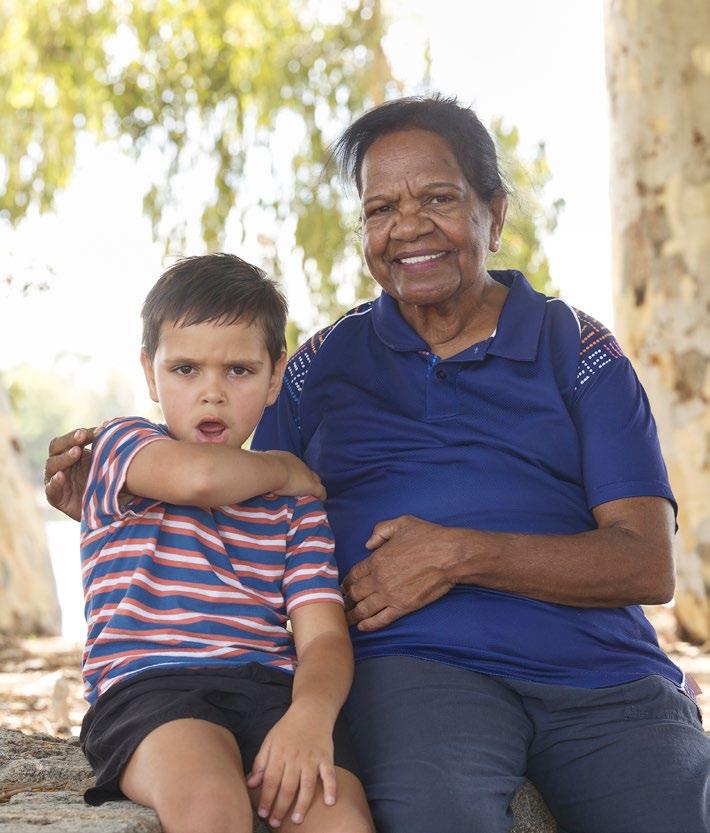
Perth campaign aims to raise awareness of dangers of a chronic wet cough in Aboriginal children
An intensive health promotion campaign which aims to raise awareness of the dangers of a chronic wet cough in Aboriginal children launched in Perth.
In a bid to improve the lung health of Aboriginal children, researchers from the Wal-yan Centre partnered with Derbarl Yerrigan Health Service, and Aboriginal families and clinicians in the Perth region.
They aim to raise awareness and to develop solutions for timely detection, accurate diagnosis, and optimal management of chronic wet cough in Aboriginal children.
Dr Gloria Lau worked together with the Derbarl Yerrigan Health Service and the local community to design and roll-out the campaign, which builds on successful wet cough campaigns implemented in Broome and the East Kimberley region, and features local community members Aunty Gail and Zachariah.
Read the full story here
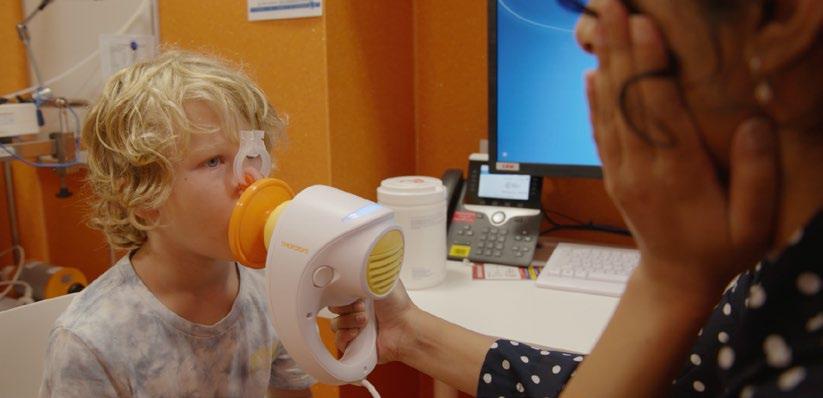
New drug offers hope for people living with cystic fibrosis
A promising new treatment pioneered in Western Australia for people with cystic fibrosis (CF) commenced testing in a clinical trial in the United States and Australia.
Developed by researchers at Telethon Kids Institute and Perth Children’s Hospital, the treatment, known as RSP-1502, uses an antibiotic booster to improve the effectiveness of treatment for respiratory infections in people with cystic fibrosis.
An early WA-based trial using RSP-1502 to treat chronically infected CF patients demonstrated an 800-times greater reduction in bacterial load, and an average 16 per cent improvement in lung function compared to 5 per cent for those patients using a standard of care treatment.
Enhanced lung function is vital for patients, enabling them to engage more in normal activities such as moving around, participating in sports, enjoying improved quality of life and ultimately, increasing their overall life expectancy.
Researchers led by Professor Barry Clements are hopeful this clinical trial will bring the new drug closer to receiving international regulatory approval. The new drug would provide people with CF access to a more effective treatment that could slow disease progression if the treatment is started early in childhood.
Read the full story here
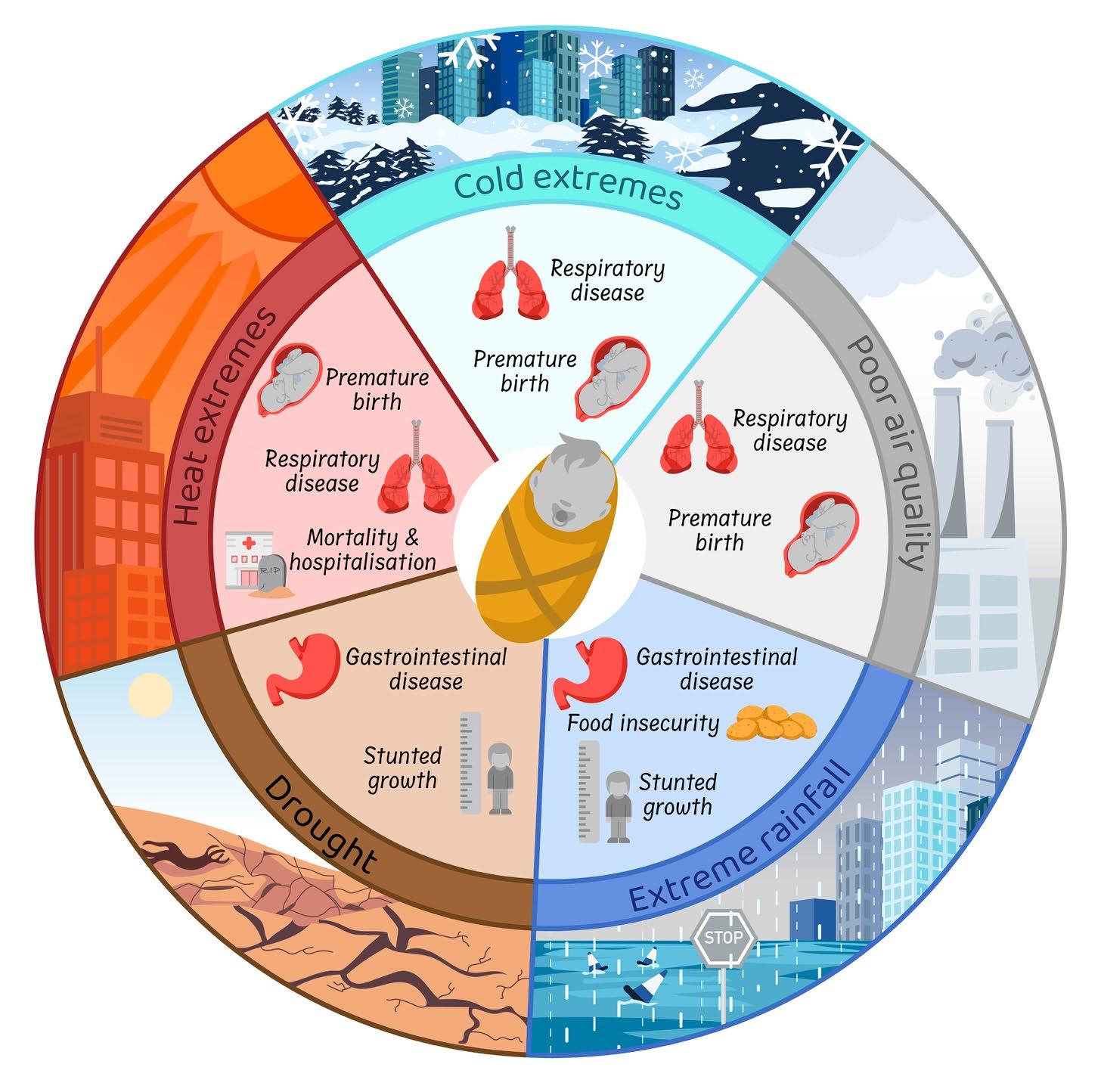
Study shows climate change will devastate children’s health without fast global action
The ever-growing spectre of climate change poses a substantial threat to the health of the most vulnerable members of society: our children. While the impact of climate change on human health has been explored in various studies, there has been a notable lack of comprehensive assessments focusing on the health effects faced by children.
In an effort to bridge this gap, researchers from the Walyan Centre co-authored a systematic review and metaanalysis to unravel the intricate relationship between climate change and the health of children globally.
The study identified a range of significant relationships between climate change and child health. The most alarming
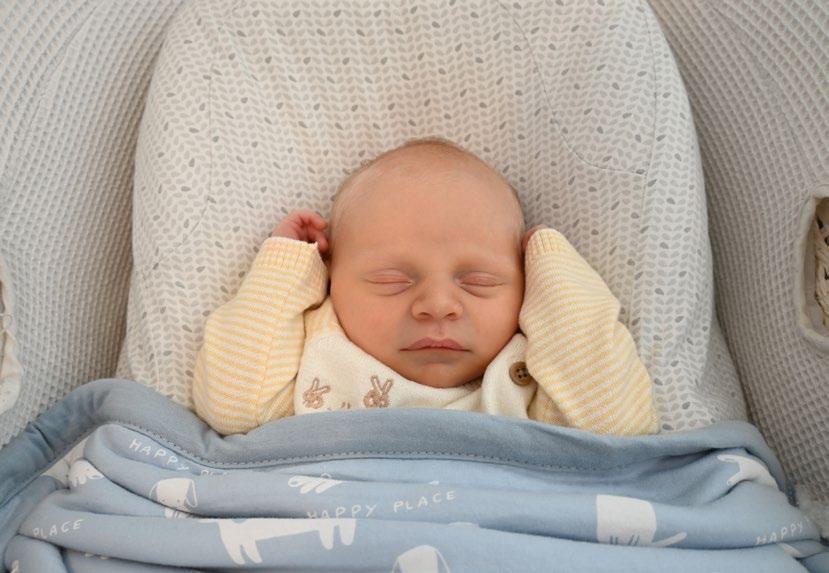
AERIAL
allergy and asthma study celebrates recruitment of final baby
revelation was the 60% increase in the average risk of preterm birth due to exposure to temperature extremes.
Additionally, respiratory diseases, mortality, and morbidity were found to be significantly influenced by climate changes, albeit to a lesser extent than preterm birth.
Despite the grim findings, the team’s research also uncovered key protective factors against climate-related child health threats.
The study’s lead author Dr Lewis Weeda said the quantification of the magnitude of expected health increases in children is paramount for effective planning and mitigation strategies.
Read the full story here
The AERIAL study endeavours to understand if exposures during pregnancy and early life can affect the cells lining the airways (epithelial cells) in newborns, and whether this is associated with the development of wheeze, allergy and asthma later in childhood.
The study - which commenced in August 2020 - celebrated a significant milestone with the recruitment of the final participants, baby Isaac and his mum Leah.
Lead researcher on the AERIAL study Dr Liz Starcevich said this study will contribute to research that could change the way we identify and treat early-life airway conditions.
Read the full story here
Research to see if we can help children with cerebral palsy to better respiratory health
Cerebral palsy (CP) isn’t a respiratory disease like cystic fibrosis or asthma, but some individuals with CP develop serious respiratory issues requiring hospitalization.
Adults with CP have a 14 times higher risk of death from respiratory disease, and it is the leading cause of premature death and hospitalization in young people with CP. Awareness and early detection of respiratory symptoms are crucial.
Researchers are identifying early risk factors and working with families, doctors, and therapists to prevent and manage respiratory disease, aiming to improve health and quality of life for children with CP.
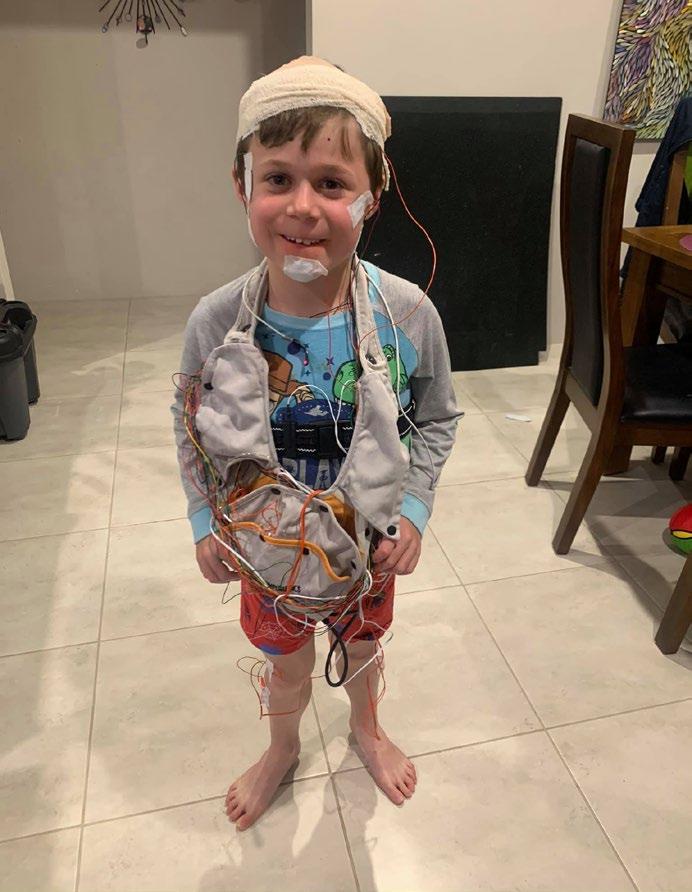
Study to prevent the breathing problems children with neuromuscular conditions experience while sleeping
Neuromuscular disorders affect the muscles used to breathe and can cause significant breathing problems. Problems with breathing often begin during sleep, but it can be difficult to determine when these problems start.
Measuring lung function helps monitor disease progression and whether treatments are effective, but many of these lung function tests are difficult for children with neuromuscular disorders to perform.
This study aimed to determine whether a combination of lung function tests, motor function tests, sleep measures and quality of life questionnaires are better than conventional tests at monitoring breathing difficulties, and if they can predict worsening disease in children with neuromuscular disease.
We expect that we can prevent future lung failure in children with neuromuscular disorders through earlier diagnosis and treatment of muscle weakness during sleep.
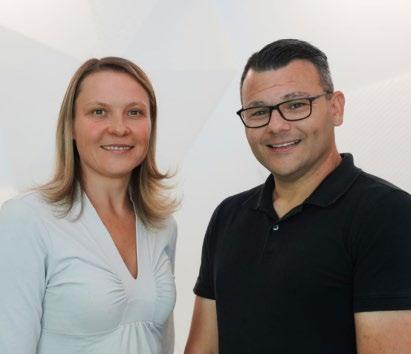
Research to see if AI can speed up therapy for people with antibiotic-resistant bacterial infections
Associate Professor Anthony Kicic and Dr Yuliya Karpievitch, together with other Wal-yan Centre team members, will investigate how artificial intelligence (AI) can speed up the process to identify the correct phage to combat a particular bacterial infection.
This project was made possible thanks to a $50,000 Innovation Challenge 2023 – Generative Artificial Intelligence Applications (GAIA) grant, recently awarded by the Western Australian Government.
The team is working on an AI platform known as PHAEDRA (PHage bacteriA genomE Diagnostics Recognition via Artificial Intelligence), which will run computer simulations to
quickly determine which of the thousands of phages available will be most suitable to use on a case-by-case basis.
Associate Professor Kicic said Australians with resistant infections are already being treated with phages, but the weakest link in the chain of service is the four to five days needed to identify the most effective phages for a specific individual’s given infection.
“Our plan is for PHAEDRA to use bacterial and phage genome sequences to identify personalised phage cocktails with the highest bacteria-killing capacity for each person’s specific infection — all within 24 hours.
“If you’ve got a very sick patient in hospital, they may not have four days to identify a match, so if we can do it within 24 hours, we could be saving lives.”
Read the full story here
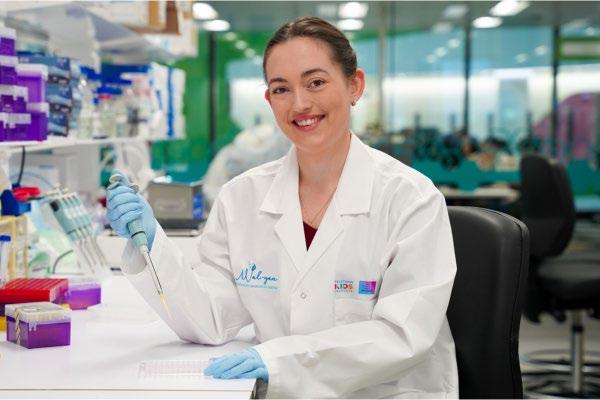
Denby Evans named Student Scientist of the Year
PhD student Ms Denby Evans was named Student Scientist of the Year at the 2023 Premier’s Science Awards in recognition of her ongoing research into the lung health of babies who are born early. Ms Evans has devoted her career to trying to solve the scientific mystery of what causes ongoing lung disease in survivors of preterm birth.
Her PhD unlocked an entirely new field of research, with her unique discoveries – including her finding that airway cells behave differently after preterm birth, even months or years after the initial hospital stay – attracting international attention, influencing clinical practice, and paving the way for novel interventions.
Ms Evans is also a strong advocate for STEM careers, regularly sharing her enthusiasm for scientific learning and research with school children during class visits, as a volunteer with the Telethon Kids Education and Outreach Program, and at events including Girls in STEM.
Read the full story here
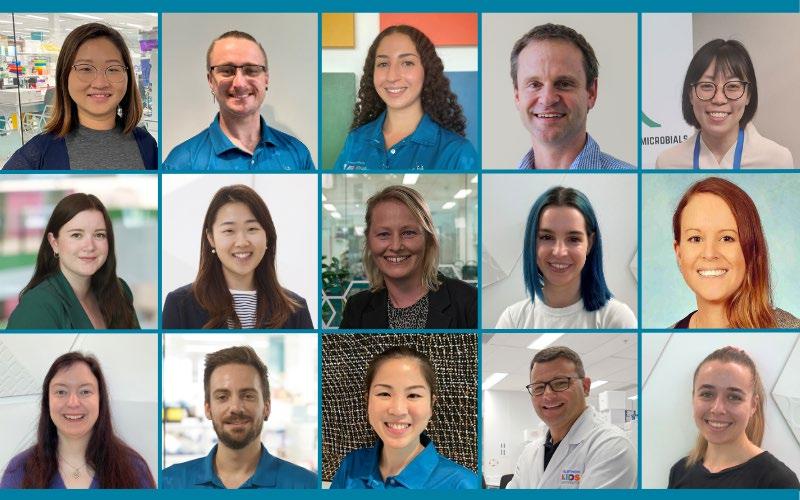
Wal-yan researchers participate at scientific meeting for leaders in lung health and respiratory medicine
More than 15 researchers from the Wal-yan Centre headed to the Gold Coast in March to take part in The Thoracic Society of Australia and New Zealand and The Australia and New Zealand Society of Respiratory Science (TSANZSRS) Annual Scientific Meeting (ASM).
The TSANZSRS ASM is for leaders in lung health and respiratory medicine from around the world.
The outstanding conference program delivered a range of clinical and research sessions as well as the latest updates from industry partners. Many Wal-yan Centre researchers contributed to the conference program as presenters, facilitators, session chairs and panel members.
Read the full story here
Wal-yan respiratory researchers presented with prestigious awards at TSANZSRS ASM
Four outstanding Wal-yan Centre researchers - Professor André Schultz, Professor Stephen Stick, Rebecca Watkinson and Michael Beaven - were presented with prestigious awards in acknowledgement of their research aimed at improving the lives of children with respiratory illness at the 2024 TSANZSRS ASM.
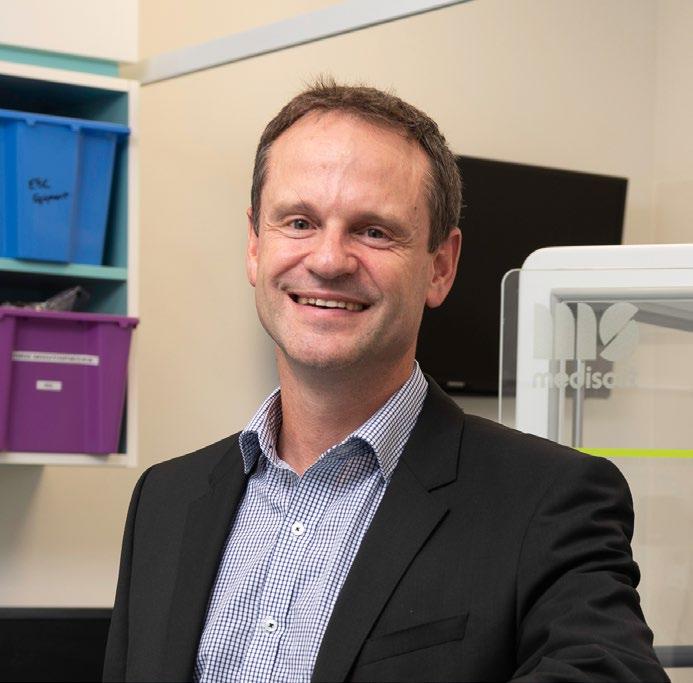
Professor André Schultz was presented with a 2024 Lung Health Legends Award by Lung Foundation Australia, in recognition of his contribution to making a positive impact on the lives of Australians living with lung disease.
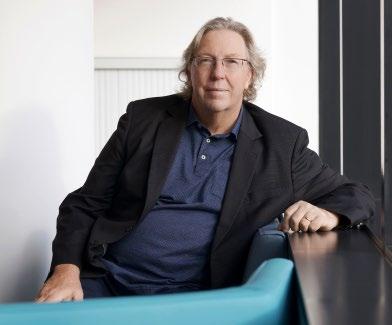
Professor Stephen Stick was awarded The Thoracic Society of Australia and New Zealand (TSANZ) Research Medal in acknowledgement of his outstanding contributions to the advancement of knowledge in respiratory medicine and science.
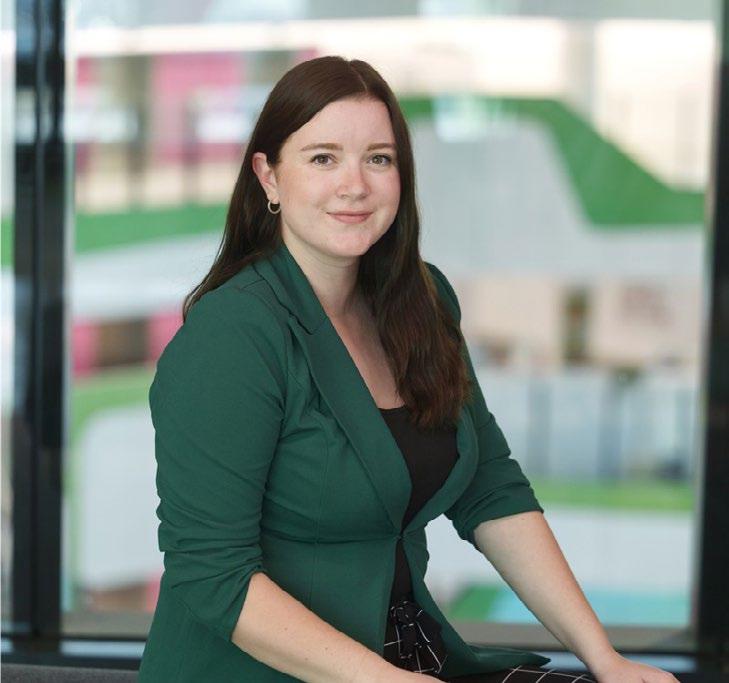
Rebecca Watkinson was awarded the Ann Woolcock New Investigator Award, which acknowledges excellence in the conduct and presentation of scientific research by current or recently graduated PhD students.
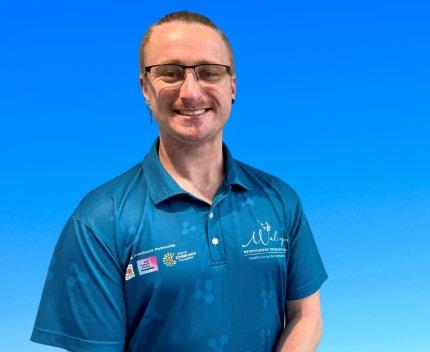
Michael Beaven was awarded the Australian and New Zealand Society of Respiratory Science (ANZSRS) New Investigator Award, which acknowledges the scientific contributions of researchers to respiratory science.
Read the full story here
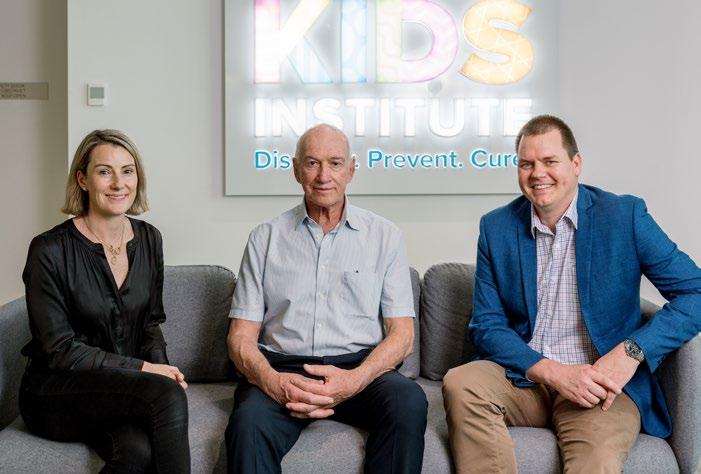
Company behind device that improves drug delivery to lungs awarded prestigious innovation award
A Telethon Kids Institute spin-off company, Inspiring Holdings Pty Ltd (Inspiring), was announced as winner of the Wesfarmers Wellbeing Platinum Award in the prestigious WA Innovator of the Year awards for their novel Universal Spacer System – a device which improves the delivery of inhaled drug to the lungs.
Inspiring is a medical device company developing a revolutionary spacer system which can be used with inhalation drug delivery devices - including metereddose inhalers (or puffers), nebulisers and dry powder inhalers - to improve the easeof-use and delivery efficiency of drug to the lungs, ensuring the lives of millions of people who suffer from conditions such as asthma are made measurably better.
The company is led by Executive Director and Chairman Dr Liz Dallimore and the researcher behind the Universal Spacer System concept Associate Professor Barry Clements, a paediatric respiratory clinician and researcher with the Wal-yan Centre.
Read the full story here
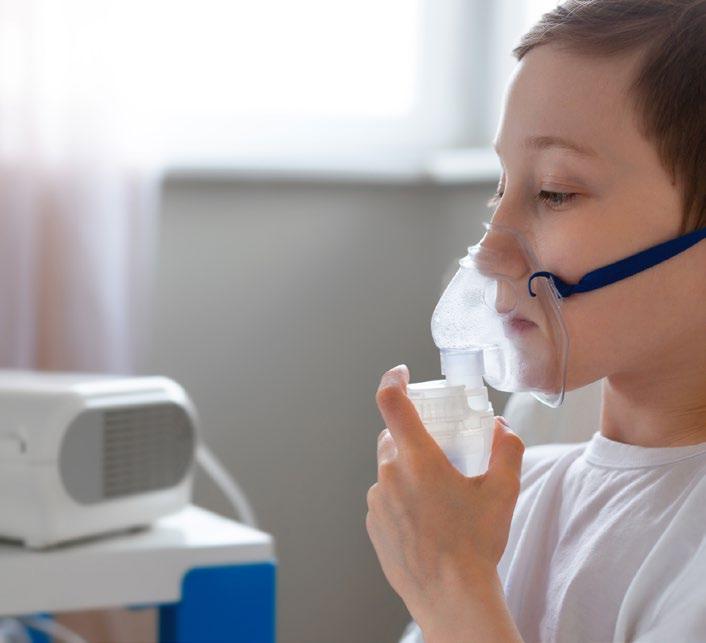
Study
unlocks new knowledge about the role of immune cells in
asthma flare-ups
Flare-ups of asthma are usually brought on by respiratory infections, such as the common cold.
Why some children develop asthma and what we can do to prevent the flare-ups from happening is still unknown.
What we do know is that when people experience severe flare-ups of asthma, immune cells travel from the blood to the lungs to fight the viral infection.
A new study aimed to investigate the activity of the immune system at the time of an asthma flare-up compared to several weeks later, when the children had recovered.
This research discovered that the immune cells are already activated before they even reach the lungs and genes are ‘chatting’ to each other, to direct the immune response in the airways. The study also found that the immune system appeared to be responding to a bacterial infection, which is interesting, given that most asthma flare-ups are caused by viral infections.
The study’s lead author Dr Anya Jones said the discovery is important, as it allows future treatments to target immune cells in the blood before they reach the airways, to improve asthma control.
Read the full story here
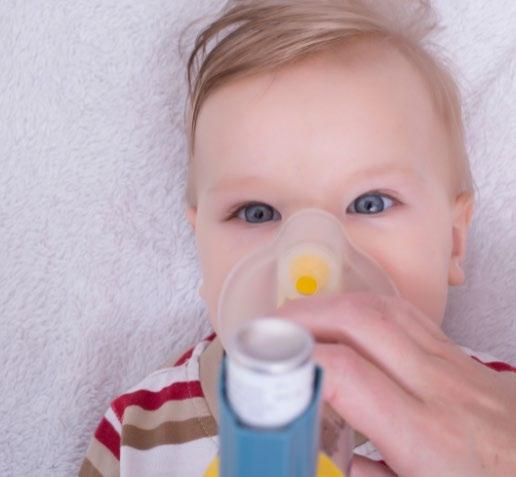
Unravelling the mystery of persistent wheeze in children: Study reveals crucial immune cell differences
Respiratory wheeze, affecting nearly half of all children during respiratory virus infections, can develop into persistent wheeze and potentially progress into asthma. Early identification of children at high risk for recurrent wheeze is essential for targeted interventions. Wal-yan Centre researchers are working to better understand what is driving the development of recurrent wheeze in childhood.
A new study examined the function of rare immune cells, specialised in responding to virus infections, in children with transient and persistent wheeze.
Findings revealed that these immune cells showed clear signs of activation and virus defence in children with transient wheeze, whereas in children with persistent wheeze the same immune cells showed very limited activation without any signs of virus defence.
The study unveils crucial insights into the immune responses of children with persistent wheeze, laying the foundation for early identification and targeted interventions.
As the research progresses, its potential impact on reducing the burden of asthma in high-risk children becomes increasingly promising.
Read the full story here
Study identifies subset of children with acute wheeze and asthma that have immune responses that predict future exacerbations
Asthma and wheezing are major reasons children visit emergency departments, often due to the common cold. The reasons why some children repeatedly visit hospitals for asthma are unclear. Hence, the most important questions for treating doctors are which child is high-risk for developing further wheezing attacks and asthma, and how to treat them.
Currently, no test can answer these questions. Associate Professor Ingrid Laing, Dr David Hancock and Dr Yuliya Karpievitch are working towards developing a test to identify high-risk children so doctors can target them for earlier interventions and/or personalised treatments.
Our study of gene networks in children who presented to Perth Children’s Hospital identified sub-groups with different responses to colds. Children with poor virus-fighting responses and increased inflammation presented back to the hospital sooner, and importantly also had a higher risk of developing persistent respiratory hospitalisations and asthma from birth to late childhood.
The discovery of what defines sub-groups of children with wheezing and asthma could lead to early-life tests and new treatments to prevent asthma and attacks in high-risk children.
MAP study celebrates recruitment of final participant
The Metabolomics to Predict Asthma (MAP) study finalised recruitment of participants for the study.
Childhood asthma begins as wheeze during preschool age. By the age of six, about 70% of children will outgrow their wheeze. However, it is not possible to determine who will outgrow their wheeze and who will not. For preschool children who experience symptoms severe enough to warrant a doctor’s visit, they are generally prescribed asthma medication that has long-term side effects.
The aim of this study, led by Professor André Schultz, is to work out if urine can be used to identify if children who wheeze as pre-schoolers will develop asthma, and gain a better understanding of disease mechanisms.
In the first part of the study, which started in 2018, the team recruited 211 children including 87 preschool aged children with wheeze, 25 healthy preschoolers, 56 school aged asthmatic children and 43 healthy school aged children.
To strengthen the team’s work, a new group of 100 preschool aged children with wheeze were recruited to the study in 2023-2024.
Study shows the airways of children with acute wheeze and asthma respond differently to Rhinovirus A and C compared to healthy children
Rhinovirus species C, followed by A, is the most common virus found in children with acute wheeze and asthma, though the reason is unknown. The airway epithelium, which protects against viruses, has vulnerabilities and atypical responses to laboratory strains of Rhinovirus A in children with stable asthma. However, the airway epithelium of children with acute wheeze and asthma had not been studied due to a lack of a pre-clinical epithelial model.
This study, led by Associate Professor Ingrid Laing and Associate Professor Anthony Kicic, collected nasal epithelial cells from children with acute wheeze and asthma to culture a three-dimensional cell model. The model revealed several vulnerabilities compared to healthy children, potentially contributing to wheeze and asthma. Infections with Rhinovirus A and C showed a dampened immune response to C and an exaggerated response to A in affected children. The next step is to target these vulnerabilities and responses with treatments.
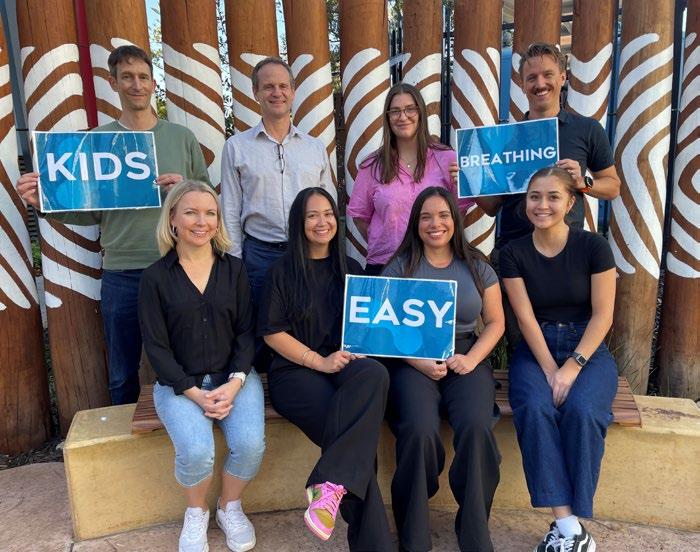
Kids Easy Breathing Study Kickstarts
The Kids Easy Breathing Study kickstarted in May, with the aim of finding out how the airway surface is different between infants who develop chronic lung disease after contracting bronchiolitis compared with those who don’t.
It is hoped the findings will help to find ways to prevent bronchiectasis in those who are vulnerable.
Bronchiolitis is a serious lung infection caused by a virus, and is the most common reason globally for children to be hospitalised.
In Australia, Indigenous children are around six times more likely than other children to be admitted in hospital for bronchiolitis.
A study from Eastern Australia found that one in five Indigenous children hospitalised for bronchiolitis were later found to have bronchiectasis - a serious lung condition that reflects permanent lung damage.
The study lead Professor André Schultz said if we could find out why some Indigenous children, and not others, develop bronchiectasis we can try to help prevent the disease.
Read the full story here
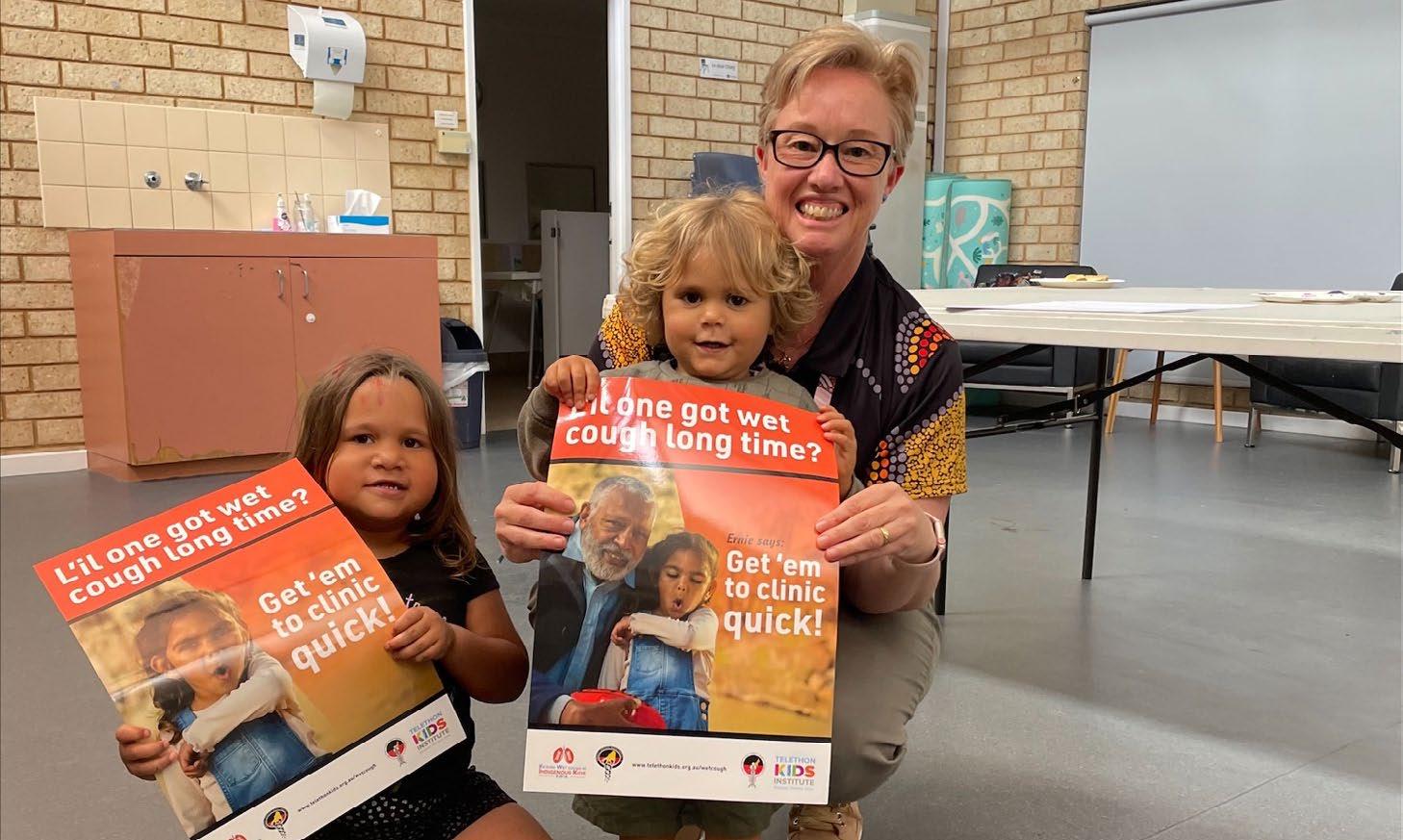
Cystic Fibrosis WA
partnership extends reach of important health message to Aboriginal communities
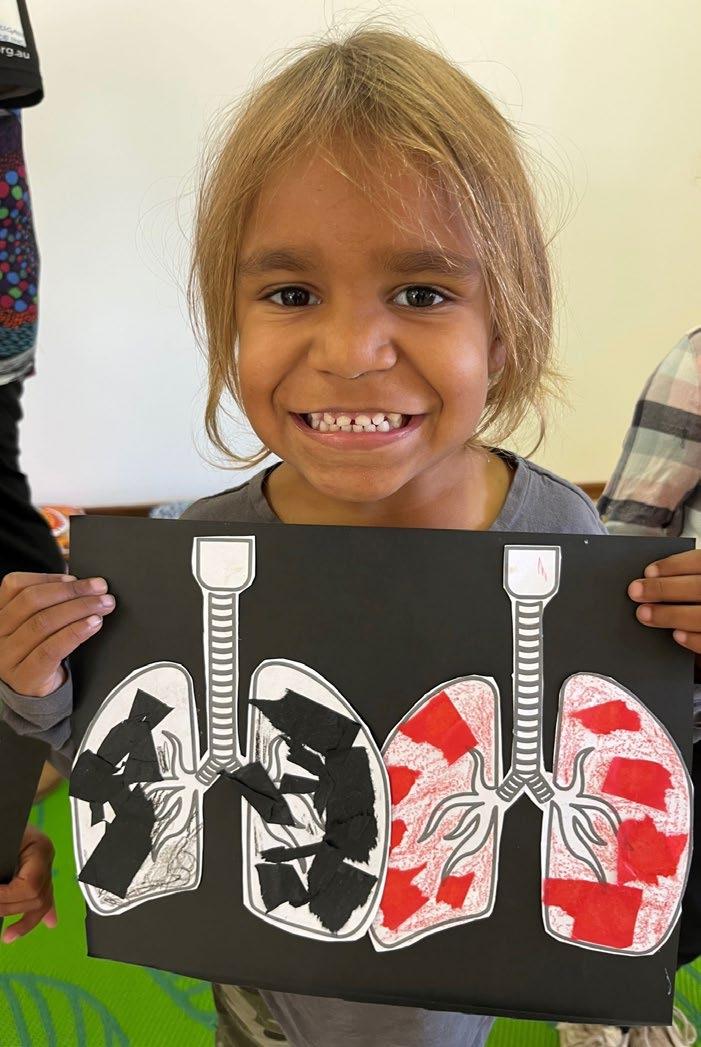
A health promotion program aimed at raising awareness of the dangers of a chronic wet cough in Aboriginal children, developed by the BREATH (Building Respiratory Equity for Aboriginal and Torres Strait Islander Health) team and Aboriginal communities, was extended to 14 remote and regional towns in Western
Australia - thanks to a partnership with Cystic Fibrosis WA (CFWA).
CFWA’s Education and Outreach Team Lead Michelle Buck and her team have been connecting with health professionals, educators, and community members to deliver the program, now in its third year, to share the culturally secure materials - such as flip charts, posters, banners, flyers, stickers, badges, videos, and training materials.
Since the beginning of CFWA’s community based chronic wet cough education program, the team has.
• visited 24 regional towns
• met with 154 health professionals
• yarned with more than 62 community groups
• trained 21 people to become chronic wet cough community champions, and
• delivered 311 resource packs to both community and events.

Partnering with Wiluna to improve the lung health of local kids
A team from the Wal-yan Centre partnered with Ngangganawili Aboriginal Health Service in Wiluna to raise awareness of the dangers of a chronic wet cough, to improve recognition and management of the condition, and to measure the lung health of children in the community.
A wet cough experienced by a child for more than four weeks can be a sign of underlying infection known as protracted bacterial bronchitis. If left untreated, this can lead to permanent, life-shortening lung disease.
Protracted bacterial bronchitis is prevalent in a number of Aboriginal communities where it was found that some of the children, where prevalence has been measured before, have a chronic wet cough.
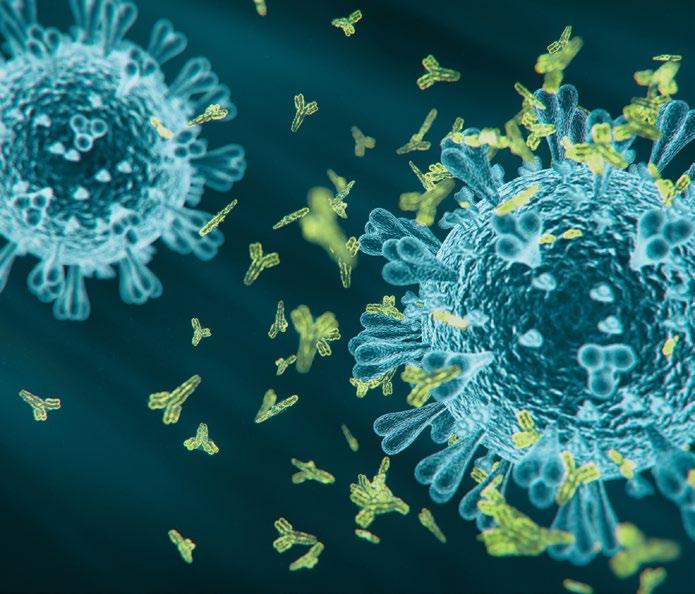
International trial shows that interferon could help reduce the spread of COVID-19
Results of an innovative clinical trial led by Perth researchers have shown that the drug interferon could help reduce the spread of COVID-19 from a positive person to their household contacts, with the study helping to inform treatment options for a future pandemic.
Respiratory disease is a leading contributor to the Indigenous health gap and often starts in childhood.
As part of the trips to Wiluna, Professor André Schultz and members of the Wal-yan Centre yarned with local families about wet cough and lung health, and screened children for chronic wet cough, protracted bacterial bronchitis and other respiratory conditions. This included lung function testing and ear checks. They were blessed to work with wonderful local community navigators introduced to them by Lisa Cooper from Kulunga.
This project was made possible thanks to funding from Northern Star Resources.
The trial tracked 1,172 participants in 341 households in Santiago, Chile where there was a positive COVID-19 case between December 2020 and June 2021.
Researchers tested the effectiveness of treating the infected people and their uninfected household contacts with interferon, with the aim of evaluating whether this drug reduces the severity of the disease and the spread of COVID-19 within families and communities.
Interferon is a naturally occurring protein that is known to boost the immune system and help the body fight infection.
Co-lead of the study Professor Stephen Stick said there are currently no drugs to prevent COVID-19 transmission, but this study demonstrated it is possible with available drugs.
Read the full story here
First 50 participants recruited into WA Paediatric Bronchiectasis Cohort
The BRIGHT (Bronchiectasis Research for ImprovinG Health outcomes and Treatment) cohort study, which aims to understand how the lung condition bronchiectasis develops during childhood, recruited the first 50 children and young people living with bronchiectasis.
Bronchiectasis is one of the most underdiagnosed and neglected lung diseases in children and adults across the world. It is a muco-obstructive lung disease characterised by cough, production of sputum, chronic inflammation and recurring lung infections. Australian First Nations children experience some of the highest rates of bronchiectasis in the world.
Research into chronic lung disease in Indigenous children and a novel RSV treatment boosted thanks to WACRF grants
Wal-yan Centre researchers will use almost $1.2 million in WA Child Research Fund grants to determine why Indigenous children develop bronchiectasis at such high rates after contracting bronchiolitis, and to test a promising novel treatment for respiratory syncytial virus (RSV).
Professor André Schultz was awarded nearly $600,000 to find out how the airway surface is different between infants who develop chronic lung disease after contracting brochiolitis compared with
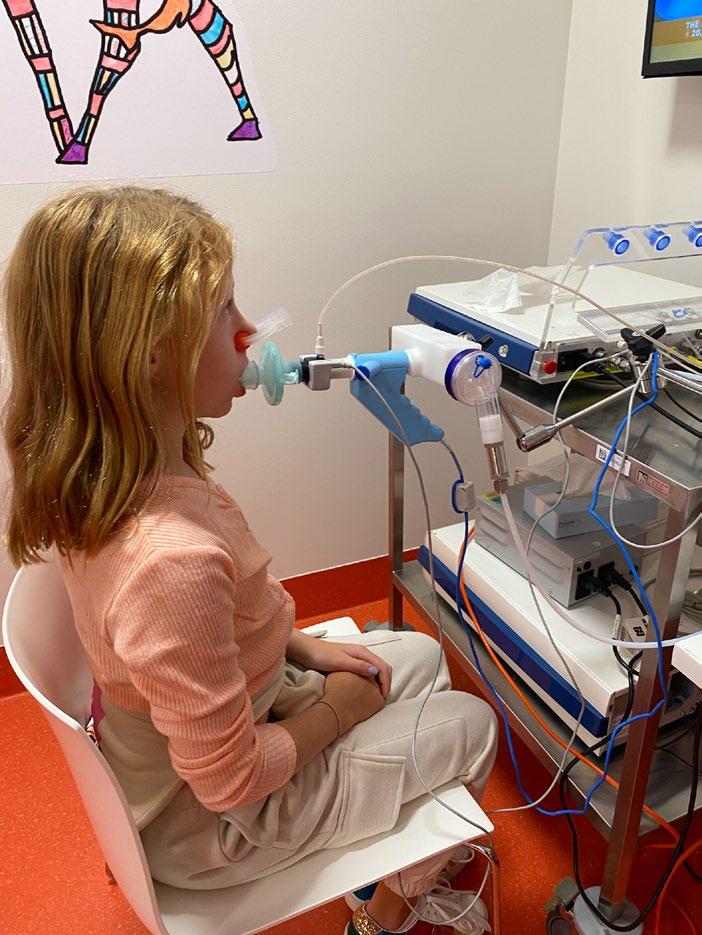
The project, led by Associate Professor Kathryn Ramsey and supported by a prestigious National Health and Medical Research Council Investigator Grant, allowed the establishment of a new longitudinal surveillance cohort of children with bronchiectasis who are receiving care at Perth Children’s Hospital. Researchers will follow their progress over a five-year period in a bid to better understand the disease.
Associate Professor Ramsey said there is a desperate need to learn more about bronchiectasis, so we can identify it earlier and ensure children receive the treatment they need.
“This study will deliver critical evidence needed to understand the disease, identify treatment targets, inform clinical care guidelines and practice, and improve health outcomes in children with bronchiectasis in WA and beyond,” Associate Professor Ramsey said.
“We also expect the knowledge we gain to pave the way for clinical trials of therapies in early life aimed at changing the trajectory of lung health in children with mucoobstructive lung disease.”
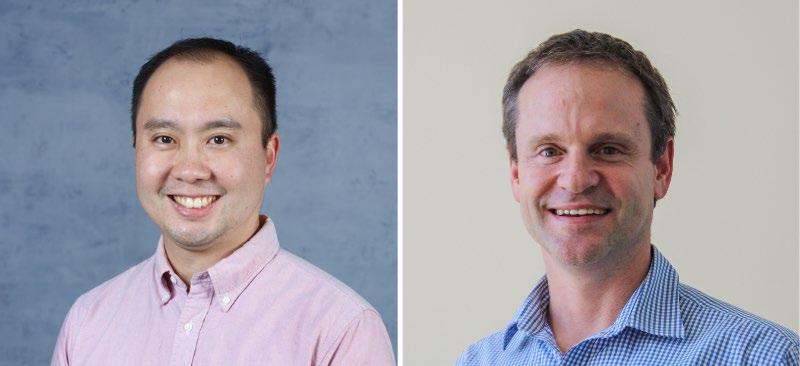
those who don’t. It is hoped the findings will help to find ways to prevent bronchiectasis in those who are vulnerable.
Dr Kevin Looi was awarded close to $600,000 to build on initial research to establish diferuloylmethane-2 (DFM2) – more commonly known as biocurcumin - as a safe, effective and affordable antiRSV therapeutic.
In particular, the research will investigate whether biocurcumin - a widely used dietary supplement – can be safely administered to children via an aerosol nebulized route, having a more direct impact upon compromised airways.
Read the full story here
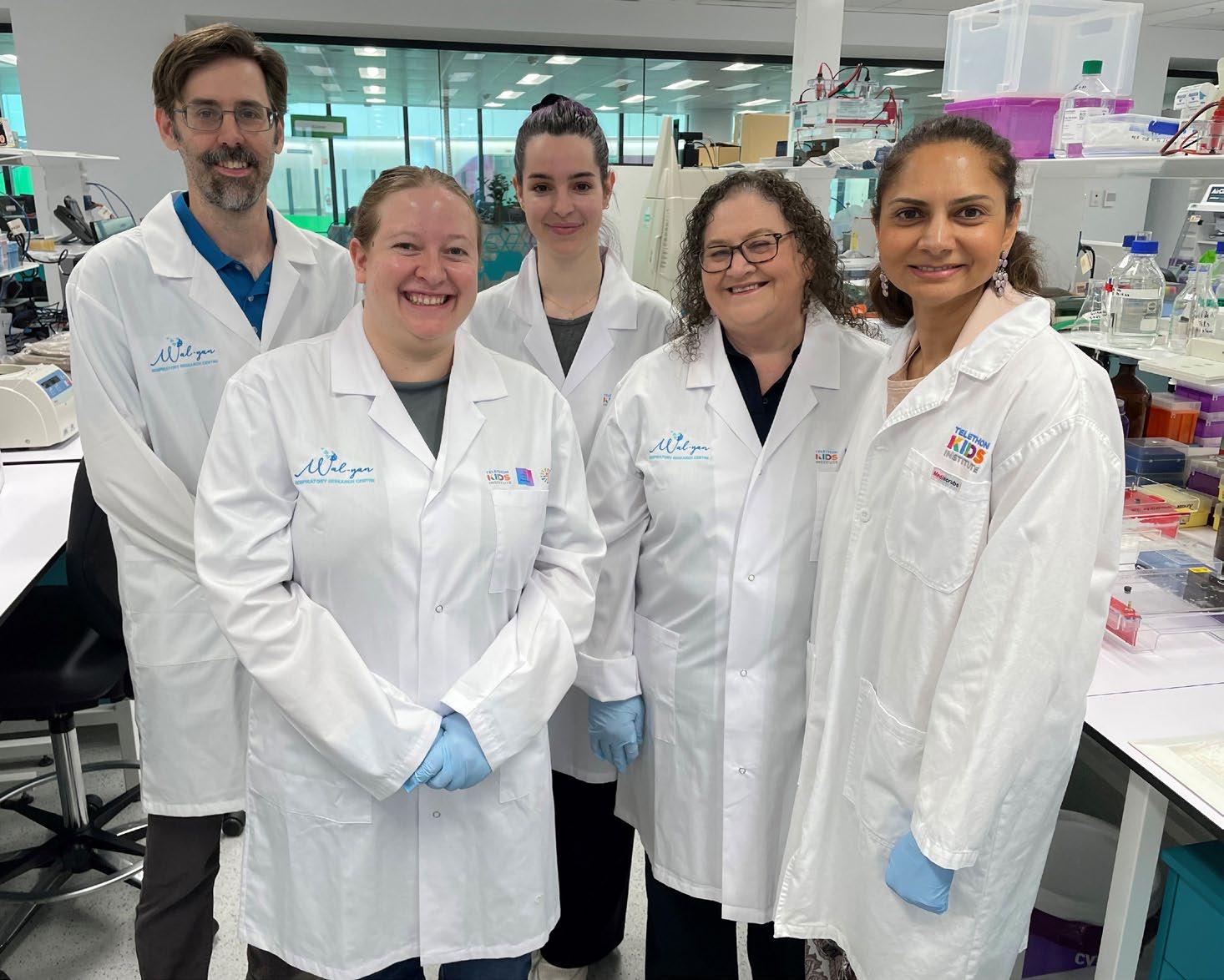
Research to explore promising new RSV treatment supported by innovation seed funding
Wal-yan Centre researchers are collaborating with Virex Pharma Ltd (Virex Pharma) to undertake vital research into a potential breakthrough treatment for respiratory syncytial virus (RSV) infections in young children, thanks to a $499,241 grant awarded by the Western Australian Department of Health Innovation Seed Fund.
Despite the urgent need for effective treatments, there is currently no specific treatment for RSV, with treatment being largely supportive and aimed at managing symptoms. In severe cases, hospitalisation may be necessary to provide oxygen and other supportive care.
Virex Pharma, an innovative biopharmaceutical company specialising in antiviral therapies, is developing a unique inhaled antiviral nanoemulsion treatment for RSV, known as GlyXine, that has shown broad ranging antiviral activity against respiratory viruses including RSV, influenza and COVID-19.
The innovation seed funding will enable Associate Professor Anthony Kicic and Associate Professor Alexander Larcombe to further test the safety, effectiveness and tolerability of GlyXine for treating RSV.
Associate Professor Larcombe said that with limited treatment options for RSV, the development of an antiviral agent that can be used in non-clinical settings to treat this virus represents a significant unmet need, locally and globally.
Read the full story here
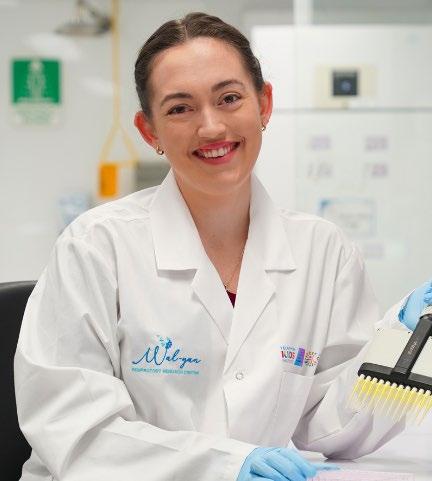
Fellowship to support research into ways to improve the lung health of people born preterm
Ms Denby Evans was awarded one of four inaugural fellowships supported by the State’s Future Health Research and Innovation (FHRI) Fund and Brightspark Foundation, enabling her to further her research into ways to improve the lung health of people born preterm.
Ms Evans will study the airways of premature babies with the aim of finding new treatments to improve the lung health of people born preterm.
“We don’t have any good treatments for stopping progressive lung disease after preterm birth,” said Ms Evans.
“My research aims to identify treatable traits for prematurityassociated lung disease in these children. A treatable trait or personalised medicine approach means patients are individually assessed for problems that might be causing disease.
“Instead of looking at the disease overall, it allows us to focus and find treatments that target the underlying problems causing symptoms for individuals.”
Read the full story here
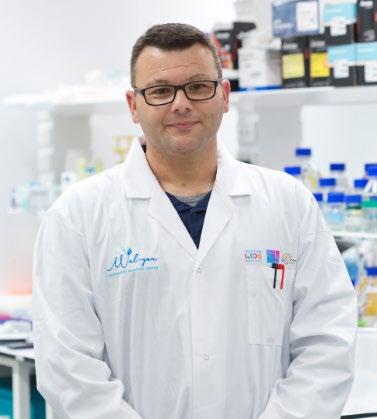
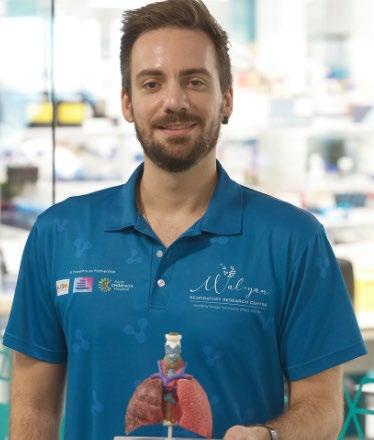
Research into innovative treatments for asthma and antibiotic-resistant infections fuelled by Stan Perron Charitable Foundation grants
New funding from the Stan Perron Charitable Foundation will support research into innovative treatments for antibiotic-resistant infections and asthma in children.
Associate Professor Anthony Kicic was awarded a Programs and Partnerships grant to establish a novel therapeutics pipeline to treat antibiotic resistant infections in children.
Dr Thomas Iosifidis was awarded a People grant to support his work for a further five years into enhancing airway repair to prevent respiratory deterioration in children with asthma.
Read the full story here
BANK CF supported through inaugural WA Cohort StudiesOperational Support Program
The Respiratory Centre Cystic Fibrosis Biobank - BANK CF - was one of seven cohort studies to receive funding through the inaugural WA Cohort Studies-Operational Support Program (WACS-OSP).
The WACS-OSP, funded by the Future Health Research and Innovation Fund, aims to provide operational funding necessary for cohort studies to continue to contribute to the delivery of clinical outcomes, changes to health policy and translational health outcomes.
BANK CF was awarded $221,833 through the WACS-OSP.
Consolidated in 2018, BANK CF is a biobank of respiratoryrelated biological samples and data which aims to create a resource that supports diverse research to improve cystic fibrosis (CF) management.
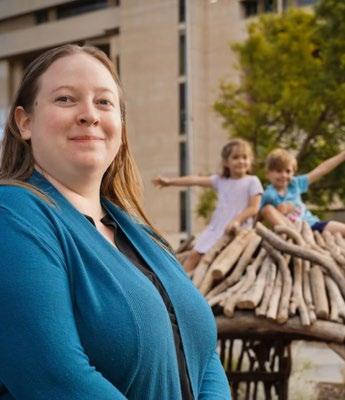
Dr Katherine Landwehr receives crucial near miss funding
Dr Katherine Landwehr was awarded second chance WA health funding designed to support researchers who have narrowly missed out on highly competitive national funding.
The WA Near Miss Awards: Emerging Leaders 2023 (WANMA EL) program is backed by the Western Australian Government’s Future Health Research and Innovation (FHRI) Fund.
Dr Landwehr was awarded a $100,000 grant to investigate the toxic effects of air pollution and its role in childhood lung disease.
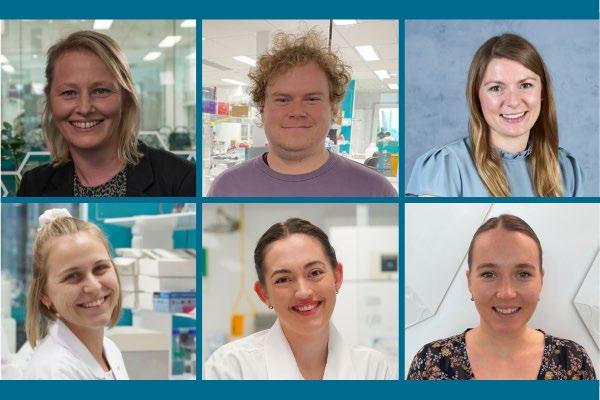
Wal-yan respiratory researchers headed to Milan to participate in international congress September saw respiratory experts from across the world brought together to showcase all the latest advances in respiratory medicine and science.
The European Respiratory Society (ERS) International Congress held in Milan, Italy, offered a comprehensive programme covering a range of diseases areas including sleep and breathing disorders, airway diseases, paediatric respiratory diseases, and respiratory infections.
A team of researchers from the Wal-yan Centre took part in, and contributed to, the outstanding scientific programme of the Congress.
Read the full story here
Establishment of biobank to help understanding of health implications of circadian rhythm disruption in early life
Dr Thomas Iosifidis and Dr Luke Garrat, researchers in the Airway Epithelial Research team, were the recipients of the 2023 Telethon Kids Institute Theme Collaboration Award for securing a biobank to study the health implications of circadian rhythm disruption in early life.
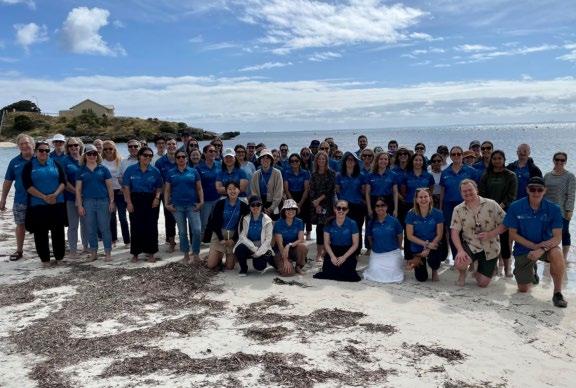
Wal-yan Scientific Retreat: Fostering Collaborative Excellence
The Wal-yan Centre’s team members, along with special guests, embarked on a journey to Wadjemup (Rottnest Island) in November.
The project is focused on understanding the role of circadian rhythm disruption in immunology/infection outcomes in preterm born infants, and formed a new collaboration network between 12 Institute teams, across two themes and external investigators, to establish a biobank from the existing CIRCA DIEM randomised controlled trial.
The biobank will provide future avenues to understand the role of circadian care package in promoting improved long-term respiratory wellbeing in children born preterm.
The two-day immersion brought together great minds to delve deeper into the diverse range of research initiatives within the Centre, encouraging active participation and knowledge sharing.
In addition, the scientific retreat served as a platform to discuss prospective partnerships, innovative concepts, and strategies for enhancing the research endeavours of the Centre.
Read the full story here
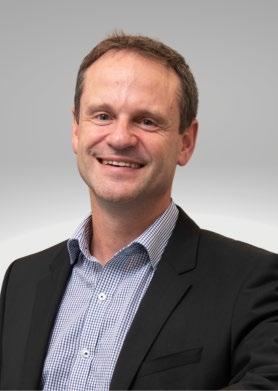
Wal-yan Centre welcomes Professor André Schultz as new Head
In an exciting development for the Wal-yan Centre, Professor André Schultz was appointed as the Centre’s new Head in February 2024, succeeding Professor Stephen Stick.
Professor Schultz brings a wealth of experience to the role, currently serving as the Program Head of Respiratory Health at Telethon Kids Institute, leader of the BREATH team at the Wal-yan Centre, and paediatric respiratory physician and Clinical Lead for Cystic Fibrosis, Bronchiectasis, and Primary Ciliary Dyskinesia at Perth Children’s Hospital.
His commitment to advancing healthcare is evident in his multifaceted approach to improving the health trajectories of children, with a particular emphasis on enhancing lung health in Indigenous children.
Read the full story here





















